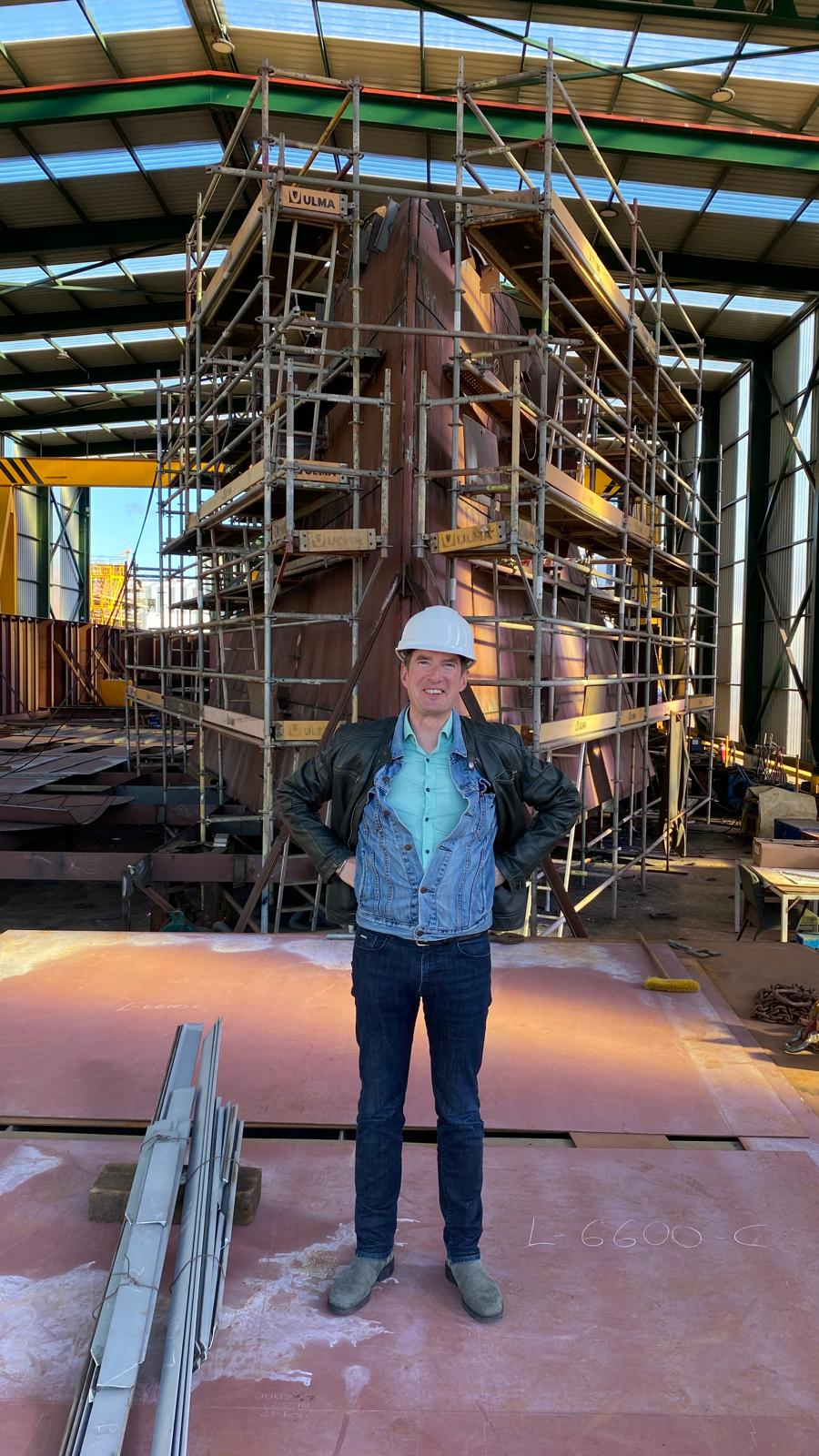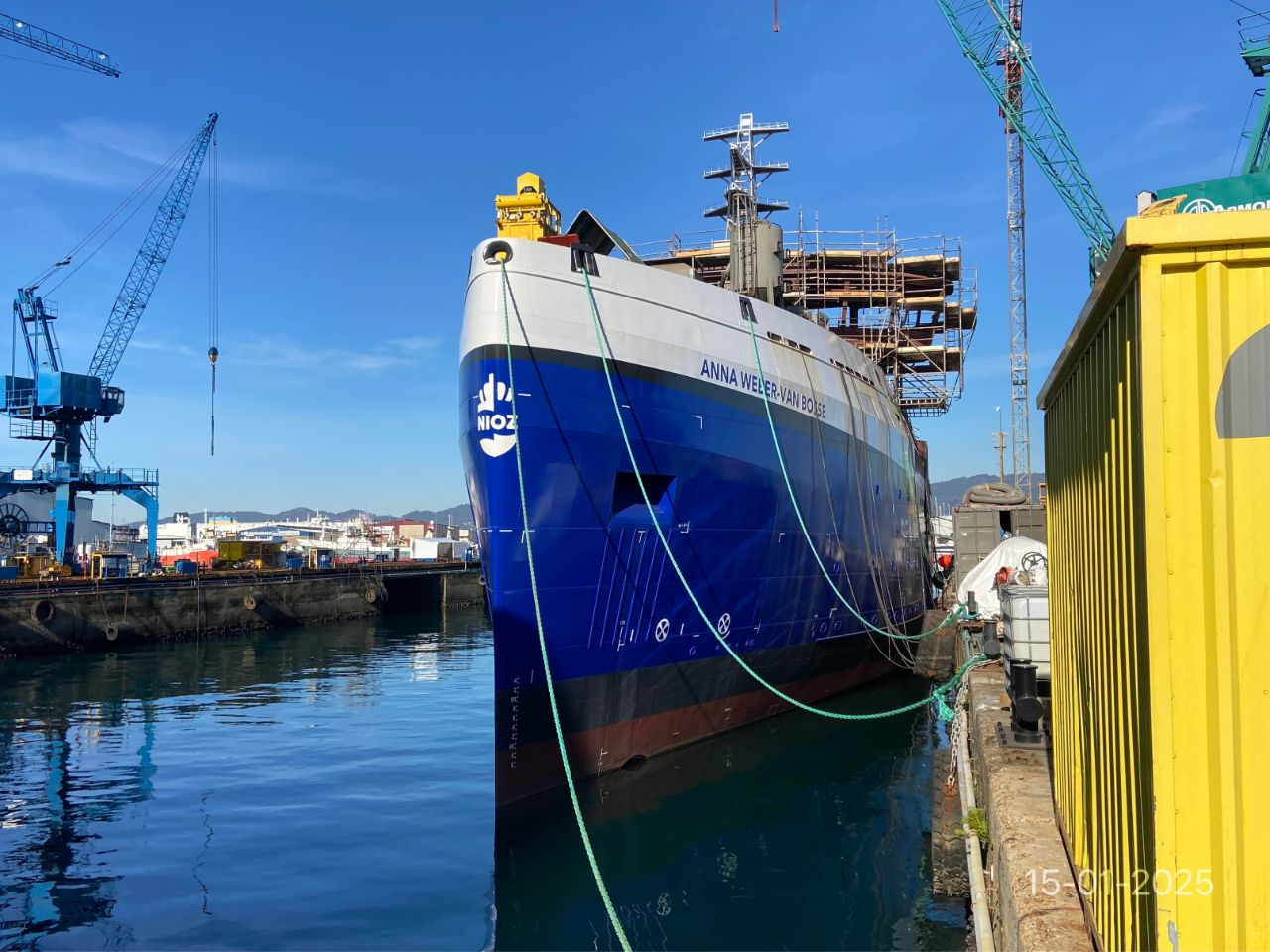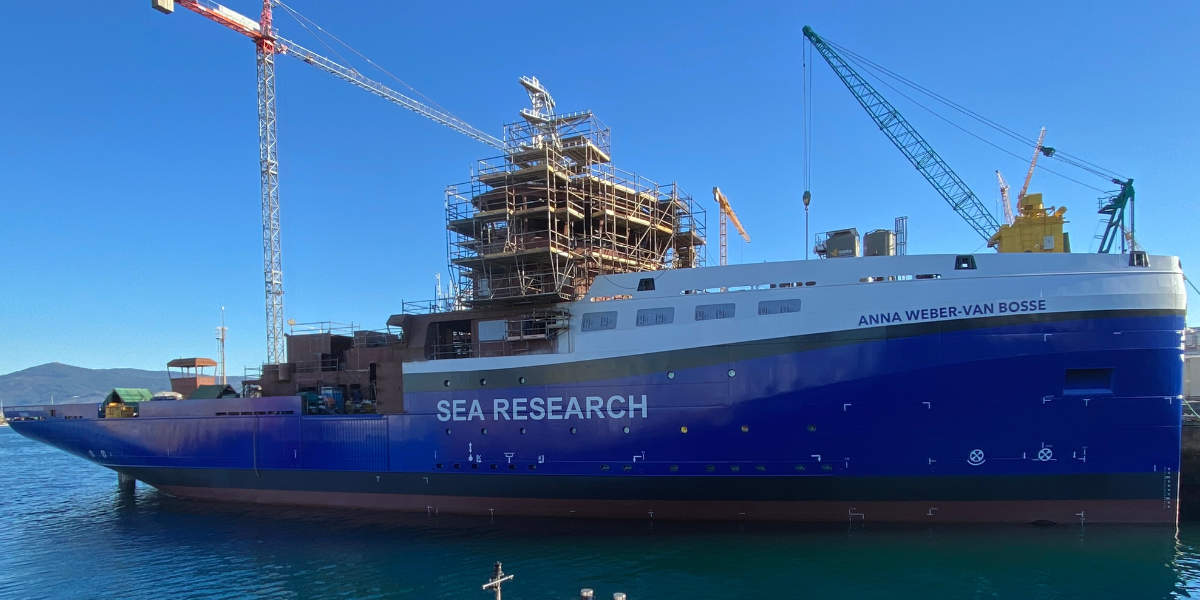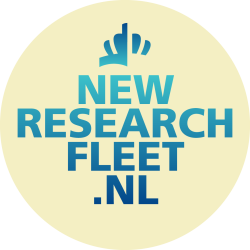Sailing time requests during RV Anna Weber-van Bosse sea trials
The new research vessel Anna Weber-van Bosse will be delivered by shipyard Armon to NIOZ/NWOi in late 2025. The vessel will be equipped with a wide range of new instruments and sensors. But before the vessel begins its normal operations, it will require exhaustive tests of its systems and equipment. These tests will be conducted between January and August 2026. Since the test expeditions also present opportunities to conduct research at sea, we would like to call on the Dutch marine research community to submit proposals for research that can be included in the scheduled sea trials. The planned research areas include the Northwest Atlantic Ocean and the Western Mediterranean Sea. A total of 100 days at sea will be made available for the projects and, in consultation with the the sailing time committee, we will evaluate the proposals based on the logistics and the optimal utilisation of all the equipment on board. For more information, please contact: coordinatornmf@nioz.nl.
Joint research plans
"In 2025, we will host several sessions with marine researchers to draw up joint research plans. " Gert-Jan Reichart, head of NIOZ Ocean Systems research, emphasises: “A year will go by in the blink of an eye, so I’m calling on our colleagues to start thinking about what they’d like to do aboard the Anna Weber-van Bosse right away. That could include projects of any size, big or small. The vessel’s size will make it possible to do a lot of things simultaneously.” Reichart himself hopes to be able to go on an expedition to Indonesia someday, following in the footsteps of Anna Weber-van Bosse herself. “It’s a fascinating area from an oceanographic perspective, at the junction between the Pacific and Indian oceans. We’ve received a lot of international interest in a collaboration with us, including parties from Indonesia.”
Research that hadn’t been possible before
The opportunities presented by the Anna Weber-van Bosse far exceed those of the Pelagia, the Netherlands’ ocean-going research vessel for the past 30 years. Reichart: “We’ll be able to organise scientific expeditions to places that we’d only been able to reach with foreign vessels before. We’ll have new equipment on board that we didn’t have before, for example, like a whole series of sensors under the ship, and in a drop keel that can be extended several meters below the hull. We’ll also have an underwater robot that allows us to work on the ocean floor.” The Anna Weber-van Bosse will also have a low ice class. “That means we’ll be able to work at the edge of the sea ice cover. We weren’t able to do that before.”
More passengers and crew, and a classroom at sea
The new vessel will be larger, so it will be able to carry more passengers and crew. In fact, it will offer space for twice the number of scientists. “We’ll have room for 25 aboard the Anna Weber-van Bosse. That means we’ll be able to conduct several projects simultaneously, and we’ll be able to perform larger experiments. It will also be possible to bring journalists along with us, for example.”
The vessel will also present more opportunities in other areas. Reichart explains that the Anna Weber-van Bosse was designed with a ‘classroom at sea’; a room with a direct online connection. “A lecturer will be able to give lectures at sea, and may be able to show students more than they would in an ordinary classroom ashore. Students can also immediately use the collected data, help brainstorm with the researchers on board, and participate in their experiments. That will also allow students to join the expeditions virtually.”
Construction progress
The launch in October 2024 was an important milestone in the vessel’s construction. The 80-meter hull was assembled at Armon Shipyards in Vigo, Spain over the course of a year. It had roughly eight decks when the hull was launched, but more have been added since. Reichart: “The vessel didn’t fit in the production hall, so sections including the wheelhouse were added on top outside the hall. An even more interesting period has begun for the scientists, as we install the laboratories and the technical equipment.”
Here you can read more about the construction planning in 2025.


Photo up and down: Progress until January 2025

